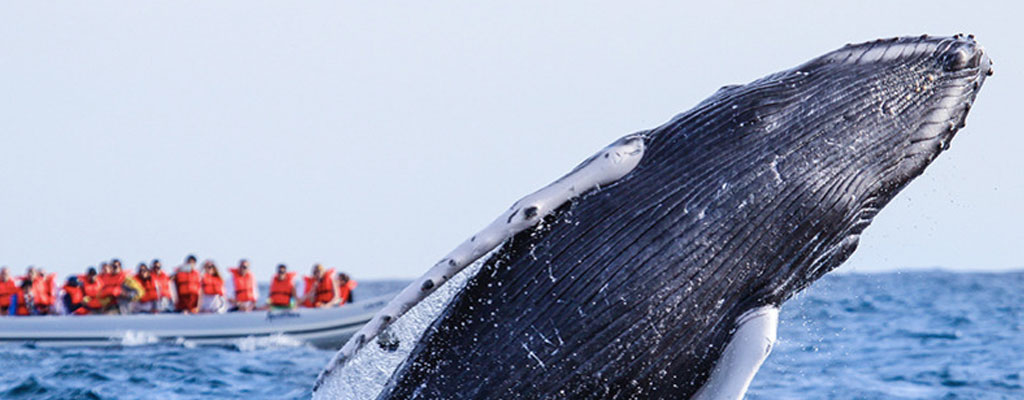
With the arrival of the first two gray whales (Eschrichtius robustus) to the temperate waters of the Biosphere Reserve El Vizcaíno, the National Commission of Natural Protected Areas (Conanp) reports the start of 2019 – 2020 season of the gray whale in the coastal lagoons of Baja California Sur.
On December 6, 2019, two juveniles arrived at the mouth of the Lagoon in the area known as Carros viejos, located in the Biosphere Reserve.
As every year, the juveniles arrive first and then the subadults and for the month of February, females with young can already be observed.
The whale watching season will begin on December 15 and end on April 30, 2020.
The gray whale is one of the most flashy cetaceans. Since, its migratory routes are very close to the coast, and thanks to its friendly behavior, it allows thousands of people to come and observe it year after year.
Coming from the seas of Bering, Chukchi and Beaufort in Alaska, the gray whale is born and reproduces in the coastal lagoons of Baja California Sur, Laguna Ojo de Liebre, Laguna Guerrero Negro, Laguna San Ignacio and Bahía Magdalena.
Its route includes a route of approximately 12 thousand kilometers in a three-month journey and a surprising punctuality upon arrival.
In the Ojo de Liebre Lagoon there are two authorized areas for tourist activities; Zone I in La Boca and Zone II in El Remate, for Laguna San Ignacio there is only one polygon for tourist activities.
The Biosphere Reserve has its Management Program in which the sites and visiting hours are established from 8:00 a.m. to 4:00 p.m., exclusively with authorized service providers and there is a register of 59 permits to carry out activities of Whale watching, exclusively with small boats within the lagoons.
The establishment of this load capacity ensures that the whales carry out their usual behavior without disturbing them.
The National Commission of Natural Protected Areas has encouraged tourism service providers to actively participate in the design of specific areas and cargo capacity, thanks to which a prestige has been achieved in the quality of service that directly benefits communities accented inside the reserve who receive approximately 12 thousand visitors during the season.
Likewise, Conanp has implemented conservation and protection actions through permanent monitoring and weekly censuses, which are complemented by surveillance work conducted by the Federal Office for Environmental Protection, in coordination with the Secretariat of the Navy, the Commission National of Aquaculture and Fishing and the collaboration of participatory surveillance committees made up of fishermen, small entrepreneurs and organized civil society.



